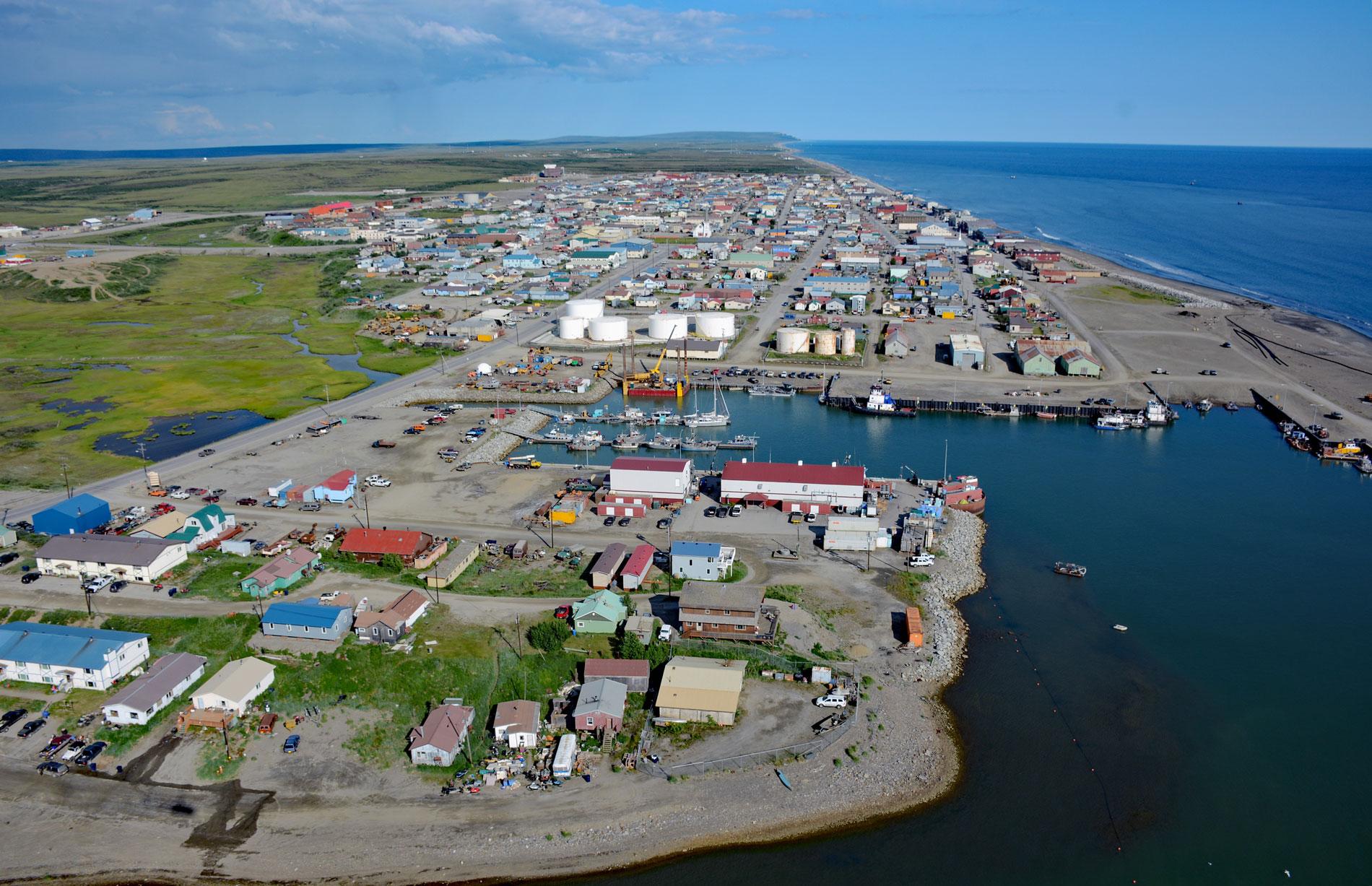Nome is a community at the mouth of the Snake River on the south coast of the Seward Peninsula on Norton Sound, about 289 miles (466 km) northwest of Bethel and 185 miles (298 km) southwest of Kotzebue, Alaska. The name is from nearby Cape Nome, but the origin of the name is generally attributed to a cartographic error made in 1853. The explanation given by the Chief Cartographer of the British Admiralty in 1900 was that a draftsman misinterpreted the annotation ‘? name’ on a chart drawn on board the HMS Herald in 1850-1852. The ‘?’ mark was taken as a ‘C’ and the ‘a’ was thought to be an ‘o’. The Snake River starts from the eastern flank of Peak 2262 in the southern foothills of the Kigluaik Mountains and flows generally south for 20 miles (32 km) to the north coast of Norton Sound draining a watershed of 83,659 acres (33,856 ha) that includes part of the Nome Mining District. The low rolling hills of southcentral Seward Peninsula including the highly productive placer gold districts are underlain by geologically complex metamorphic rocks. The Snake River watershed is mostly Quaternary sediments at low elevations surrounded by hills composed of schists that developed during the Devonian period.
The Bering Land Bridge persisted from about 30,000 years ago to 16,000 years ago during the Last Glacial Maximum and was over 600 miles (1,000 km) wide in the north-south direction. This allowed people to freely travel between Asia and North America. As the level of the sea rose, it is likely that the people were ingenious enough to traverse the water and maintain trade connections. The Iñupiat at the village of Point Hope on the Bering Strait had iron tools nearly 2,000 years ago according to the archaeological record, suggesting that trade between the continents was likely continuous. There were prehistoric villages at Cape Nome to the east of Nome that date to the Norton culture that developed along the Alaskan shore of the Bering Strait around 1000 BC and lasted through about 800 AD. In the early part of the 19th century, the population of the Seward Peninsula was about 2,500 mostly Iñupiat inhabiting five villages. Although no permanent settlements were established at the Snake River, there were many seasonal fish camps scattered along the coast.
The town of Nome was started in 1898 when six men met at the mouth of the Snake River and formed the Cape Nome mining district. The short-lived name ‘Anvil City’ was derived from Anvil Creek where the first gold was found. In June 1899, gold was found on the beaches of Nome and by August several men were prospecting there. News of the gold strike spread quickly and broadly that winter and in early summer 1900 the rush was on. At the peak of that summer, there were 30,000 people at Nome, some even journeyed down the Yukon from the Klondike, but 16,000 left within 13 weeks. Glacier Creek is an east tributary to Snake River and is an example of an important early discovery in the Nome district. Claims were staked in 1898 by the Pioneer Mining Company owned by Lindeberg, Lindblom, and Brynteson. It has since been placer mined over a distance of at least 7,000 feet (2,134 m), starting at an elevation of about 75 feet (23 m) and extending upstream to an elevation of about 125 feet (38 m). In 1900, more than 36,000 ounces (1,021 kg) of gold were produced. Mining continued to at least 1922 and included dredge operations from 1916 to 1922. The lower part of the creek, in the Snake River valley, contained fine gold throughout 10 to 15 feet (3-5 m) of gravel and in 2 to 3 feet (0.5-1 m) of creviced bedrock in a pay streak 300 feet (91 m) wide. Today, Nome is the commercial hub of northwestern Alaska and gold is still important to the local economy. Read more here and here. Explore more of Nome and the Norton Sound coast here:

